I am currently working on a project that involves using the TXB0104PWR level shifter for signal conversion. In the diagram provided, the OE pin of the level shifter is connected to a resistor going to ground. The value of the resistor is unspecified in the diagram. I am confused about how to pull the OE pin high to enable the outputs of the level shifter.
My understanding is that pulling the OE pin low would enable the tri-state mode, placing the outputs in a high-impedance state. However, I need to actively drive signals onto the bus, so I want to pull the OE pin high to enable the outputs.
How can I achieve this? Should I connect the OE pin to ground as shown in the diagram, or is there a different method to pull the OE pin high? If so, what value resistor should I use and how should it be connected, also shown is a connection from OE to the controller, what might this be?
I appreciate any clarification or guidance on properly pulling the OE pin high on the TXB0104PWR level shifter. Thank you in advance for your help!
